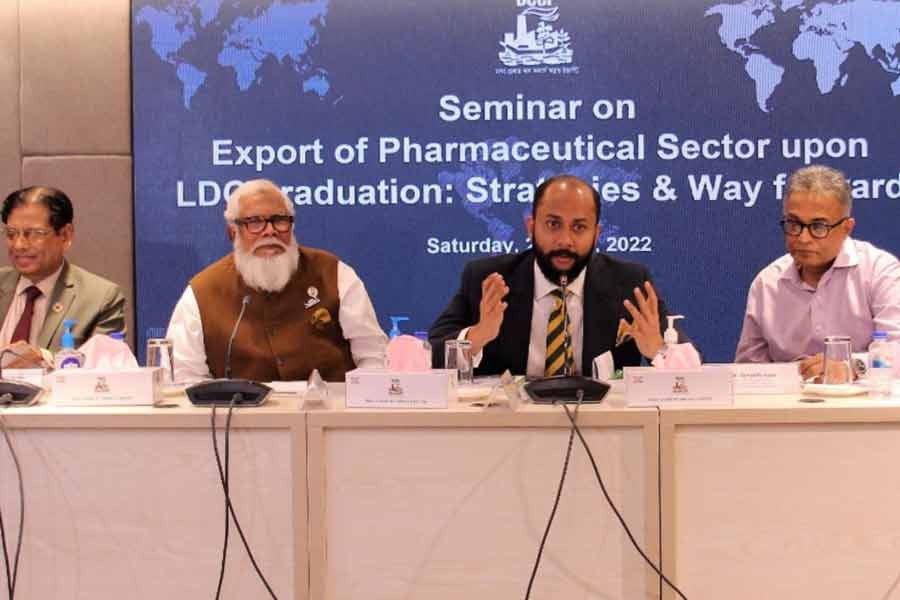That the pharmaceutical sector of the country has immense prospect for export has been recognised for some years now. It was not until the country's fledgling drug companies gave proof of their capacity, on the strength of the National Drug Policy 1982, to nearly meet the domestic need and went for producing quality medicines that received approval from the U.S Food and Drug Administration. At least three Bangladeshi pharmaceutical companies have received green signal from this food and drug-approving body known for its most stringent approval criteria. So on both points of production capacity that takes 98 per cent of the country's internal need and a breakthrough in export, the country has definitely come a long way off. If this is a sure proof of the potential the pharmaceutical industry has, there is every reason to lament why it has not been adequately tapped in the manner it was done in case of RMG.
At a DCCI (Dhaka Chamber of Commerce and Industry)-organised seminar in the city, speakers were unanimous that the pharmaceutical sector stands to be the next RMG in terms of export, provided that the right policies and strategies are initiated for achieving the objective. Export Promotion Bureau data give a detailed picture of the Bangladesh pharmaceutical companies' export to 118 countries between July 2019 and June 2020. Some reports give the number of countries to which drug companies of Bangladesh export medicines as high as 146 to 151. The sheer number of countries importing pharmaceutical products from Bangladesh can give a false impression. Such a large number of importing countries would have catapulted this country to one of the leading drug exporters. But unfortunately its share in those countries' import is very low. Percentage-wise the awfully low share of made-in-Bangladesh drugs in those countries' import speaks volumes for the drug companies' failure to gain grounds in the global drug market as well as highlight the unclaimed space still waiting to be exploited.
As the data show, drug companies here could export medicines worth more than $10 million to only four countries, including the USA, of the 21 countries that accounted for 88 per cent of Bangladesh's export in 2019. Well, this may have gone up in the succeeding two years but certainly did not receive a quantum leap. Sri Lanka and Myanmar are the two top importers of medicines of Bangladesh origin. These two countries imported from Bangladesh medicines worth $276 million and $434 million respectively and Bangladesh's shares in their drug imports were $ 20.5 million and $19.6 million, accounting for 7.40 per cent and 4.53 per cent respectively.
There is a need for vigorous export drive. The pharmaceutical companies must get their marketing policies and strategies right in order to capture a sizeable portion of the markets of at least 20-30 countries. One of the developments that should make the drug companies and the country optimistic about the industry's future is the local drug companies' access to US market. Although it constitutes a puny share of 0.02 per cent of US import, it has its symbolic value. This gives a clear indication of the drug companies' potential and the need for developing the industry as part of diversification of the export basket. At the same time an Active Pharmaceutical Ingredients (API) park has to be developed in order to keep drug prices in local market as low as possible.


